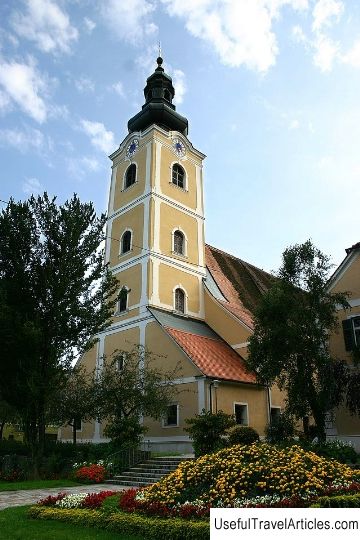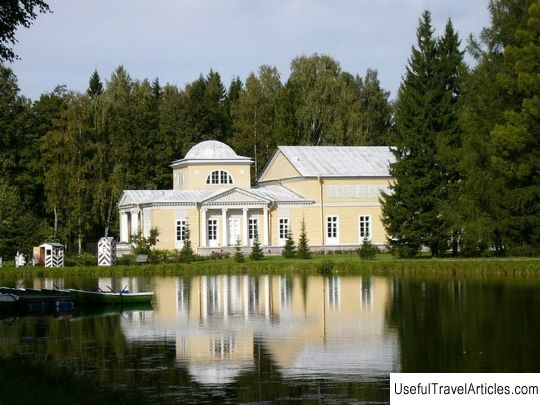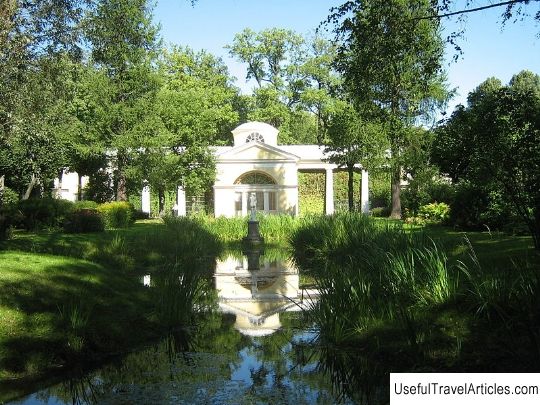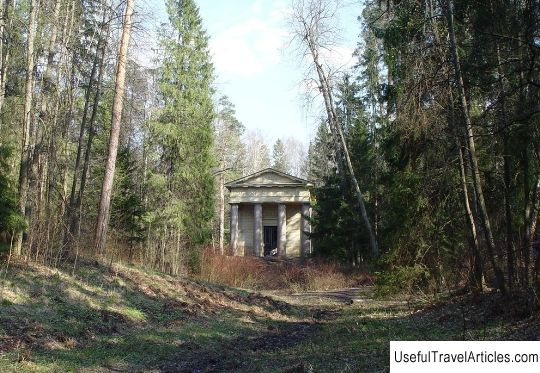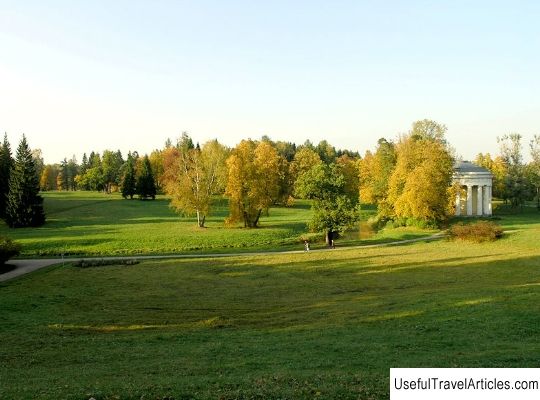Monument to parents in Pavlovsky Park description and photos - Russia - St. Petersburg: Pavlovsk
Rating: 8,9/10 (2432 votes) 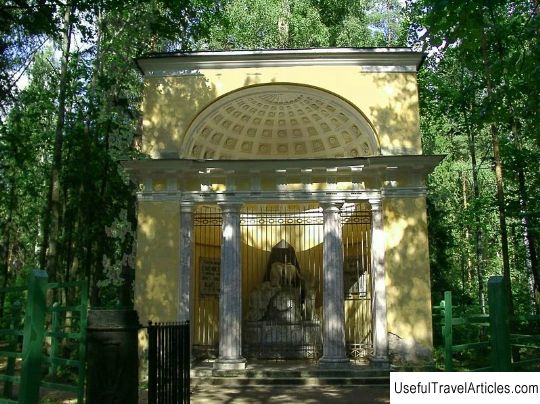
Monument to parents in Pavlovsky Park description and photos - Russia - St. Petersburg: Pavlovsk. Detailed information about the attraction. Description, photos and a map showing the nearest significant objects. Photo and descriptionMonument to parents - a park pavilion located by the road that leads from the end of Lipova Alley to Stara Sylvia. It was built in 1786-1787 according to the project of Charles Cameron. The drawing, made by the architect, is located in the Pavlovsk Palace. Initially, in archival affairs and in historical plans, the building was called the Monument. One of the plans, dated 1803, reads: "Plan and facade of the Monument." Only after the sculpture was installed, on the pyramid of which the inscription "Parents" appeared, the pavilion began to be called the Monument to Parents. The monument to parents is a memorial structure. At first, it was built in honor of the deceased princess Frederica of Wurttemberg (sister of Empress Maria Feodorovna). Such memorial monuments could often be seen in landscape parks. They evoked melancholy, evoked memories and romantic sadness. Therefore, a lone path, called Philosophical, leads to the pavilion. The road along it is a change of feelings, moods and a sentimental immersion in the past. The importance of this path is evidenced by the fact that the Monument is designed for viewing only from the 1st side, from the side of the path. It stretches past the mourning cast-iron gates, on the pillars of which there is an image of emblems of death and sorrow tied with wreaths: teardrop vases and overturned fading torches. The gate was designed by Tom de Thomon. Now they are badly destroyed. Behind the gates, in a small open area, there is a pavilion in a classical style. Built in the form of an ancient Roman temple of the aedicula, without decoration, except for the entablature. Only from the side of the main facade, the structure is cut through by a semicircular niche, decorated with 2 columns and pilasters that support the entablature. Behind it rises the arch of the niche, processed with caissons with molded plaster rosettes. In the middle of the vault there is a stucco rosette and a shell, separated from the caissons by a stucco garland of laurel leaves. The walls are made of bricks, plastered and painted with yellow paint. The pilasters and columns are made of light pink Olonets marble, and the capitals are made of white. The floor is represented by slabs of Pudost stone. 3 compound steps of the same stone lead to the aedikula. Initially, there was no sculpture in the pavilion. Opposite the entrance was a black marble plaque dedicated to the late sister Frederick, and on the sides, in small niches, were installed antique ash-storage vases. After the death of the parents of Empress Maria Feodorovna, the interior decoration of the pavilion changed. At the beginning of the 19th century, a sculptural composition by I.P. Martos, niches were laid, new memorial plaques appeared with the names of three deceased relatives of the Empress. In the recesses were placed 2 boards of gray marble with inscriptions in overhead letters made of copper: “To my sister Elizabeth on February 7, 1790. To my brother Karl on August 11, 1791 ", on the right:" To my sister Frederica, 1785 November 15 days. " The sculptural ensemble, made by I.P. Martos, set on a gray marble base with white veins, decorated with 3 allegorical bas-reliefs. It has a round pedestal made of dark gray marble, the front part of which is decorated with a round medallion with a bas-relief image of two portraits of the Empress Maria Feodorovna's parents: Duchess Frederick Sophia Dorothea of Wurttemberg and Duke Friedrich Eugene. On the pedestal you can see 2 urns in white marble. They are entwined with a garland and covered with one veil. To the right of the pedestal is the Winged Genius throwing off the veil. At his feet is a white marble shield, which is decorated with coats of arms with a garland. On the other side of the pedestal is a woman in antique clothes, wrapped in a cloak, with a crown on her head. The grieving woman put her head on her outstretched arms. The whole composition is set against the background of a granite truncated red pyramid. On it you can read: "To parents". She gave the building a new name,     We also recommend reading Varna Dolphinarium description and photos - Bulgaria: Varna Topic: Monument to parents in Pavlovsky Park description and photos - Russia - St. Petersburg: Pavlovsk. |
